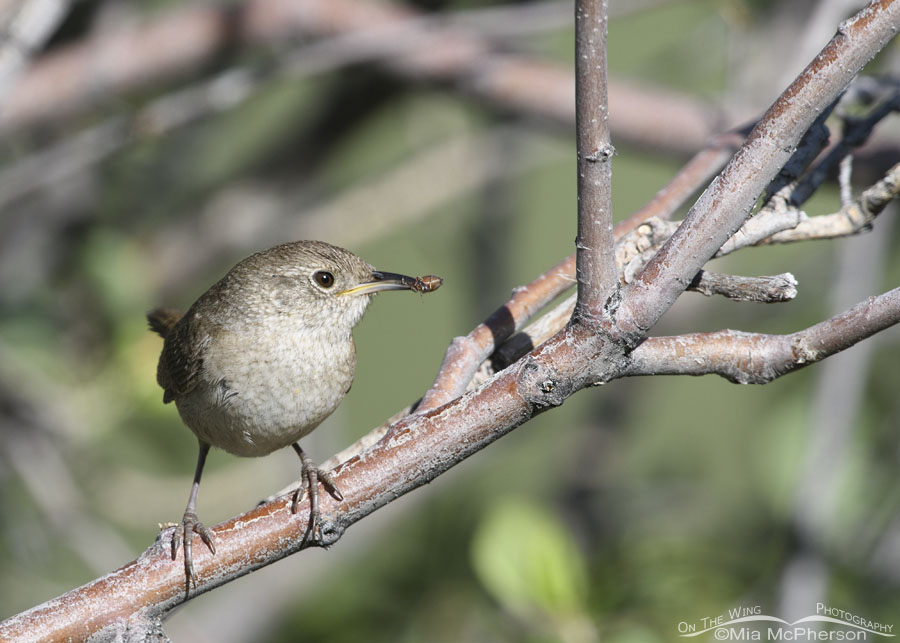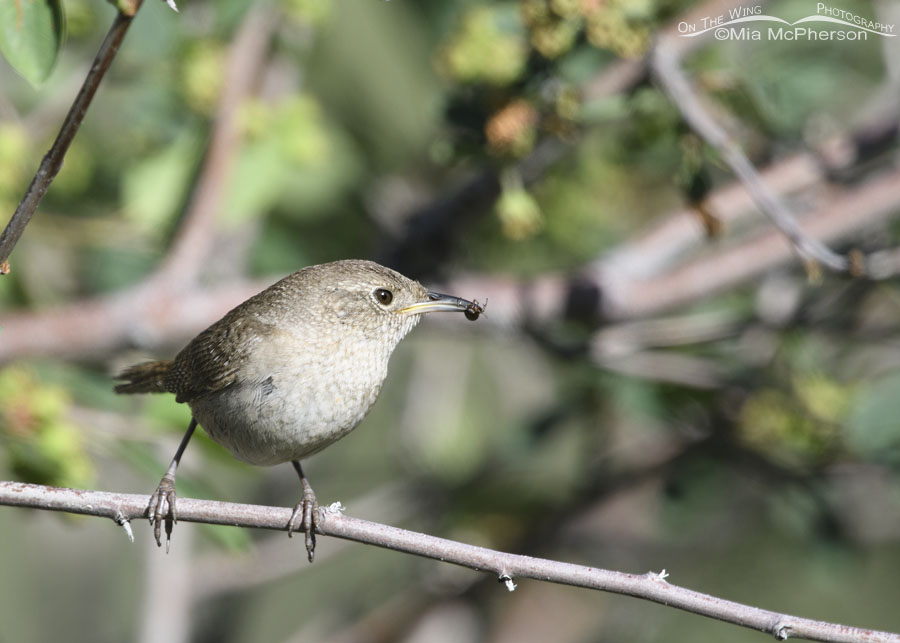 House Wren with insect prey for its young – Nikon D500, f7.1, 1/800, ISO 400, Nikkor 500mm VR with 1.4x TC, natural light
House Wren with insect prey for its young – Nikon D500, f7.1, 1/800, ISO 400, Nikkor 500mm VR with 1.4x TC, natural light
Four days ago I stopped briefly where I knew that there was a House Wren nest and was delighted to see an adult with insect prey for its young in its bill.
Last year this House Wren nest failed. It probably failed due to extreme high heat because the nest is in a rusted metal pipe. I would love to see this nest succeed this year.
Even though I was not right up on the nest I knew my presence could delay the adult from entering the nest. I don’t like to interfere with the natural behavior of birds when I am in the field and avoid doing that as much as I can. It is the ethical thing to do.
 House Wren with insect prey for its nestlings – Nikon D500, f7.1, 1/800, ISO 400, Nikkor 500mm VR with 1.4x TC, natural light
House Wren with insect prey for its nestlings – Nikon D500, f7.1, 1/800, ISO 400, Nikkor 500mm VR with 1.4x TC, natural light
When the House Wren flew from one branch to another I decided it was time to leave the wren in peace to take the insect to the hungry mouths in the nest.
The photos I take are never as important as the well being of my subjects.
Ethics on photographing nesting birds:
- Do not approach too closely;
- If the birds show any sign of distress, back away;
- Don’t trim leaves, twigs or branches to get a clearer shot, you may inadvertently cause the eggs or chicks to over heat;
- Follow local, state and federal guidelines concerning nesting birds;
- Don’t harass the birds to get an action shot;
- Don’t stay a long time with nesting birds or chicks, that can disrupt their normal behavior;
- Always remember that your scent may draw predators to the area of nesting birds or birds with chicks.
Life is good.
Mia
Click here to see more of my House Wren photos plus facts and information about this species.


Wonderful pics; especially the first one. The colors, detail and the overall composition of both shots is crazy good. Like your other contributors – I appreciate and value your ethics. These standards speak to the level of care you put into all of your photos. Thanks Mia.
I appreciate your ethics. ❤️
Thank you. For the shot and for your ethics.
We have several along the way as we take our morning stroll. They certainly announce their territory to all passers-by. I saw the rusty pipe in your earlier blog. It must really capture the heat of the sun.